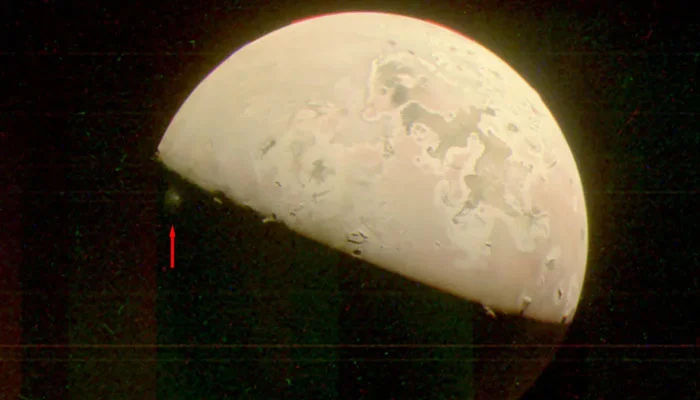On December 30, the NASA spacecraft Juno is scheduled to do a historic close flyby of Jupiter’s moon Io, which will be the probe’s closest approach to the volcanic moon in more than 20 years.
As it gets closer to Io’s surface, which is around 930 miles (1,500 kilometers), the mission’s instruments are supposed to gather a lot of data.
The importance of this near encounter was highlighted by Juno’s principle investigator, Scott Bolton, who said, “The Juno science team is studying how Io’s volcanoes vary by combining data from this flyby with our previous observations.”
The mission aims to investigate the frequency and strength of lava flows, as well as the relationship between charged particles in Jupiter’s magnetosphere and Io’s activity.
This mission comes after Juno’s 56 prior flybys of Jupiter, which recorded up-close encounters with three of the largest moons of the gas giant. On February 3, 2024, an even closer flyby of Io is planned, staying around the same distance from the moon’s surface.
Currently in its third year of an extended mission, Juno has been able to observe the volcanic activity on Io from a variety of distances and has given us unique views of the polar regions of the moon. The mission has also carried out near-flybys of Ganymede and Europa, Jupiter’s icy moons.
During the Io flyby, all three of Juno’s cameras will be in operation, taking visible-light color photographs (JunoCam), high-resolution surface images (Stellar Reference Unit), and infrared images of volcanic heat signatures (JIRAM).
Even though JunoCam faces difficulties due to the hostile radiation environment in the solar system, the spacecraft’s trajectory has been modified for a total of 18 far-off Io flybys in the extended mission plan.
These flybys will gradually get farther apart, allowing for additional scientific observations and offering insightful information about Io’s gravitational pull on Juno’s orbit.





